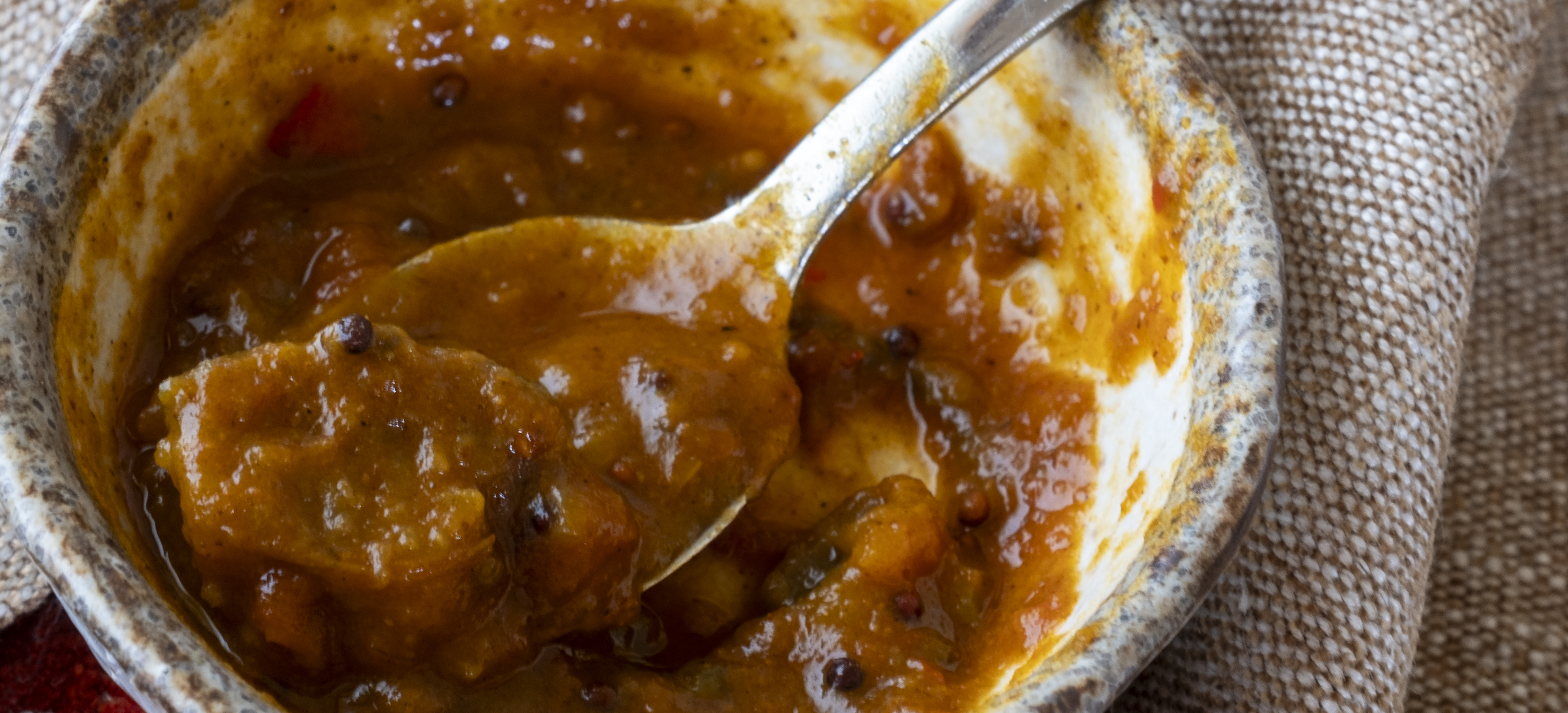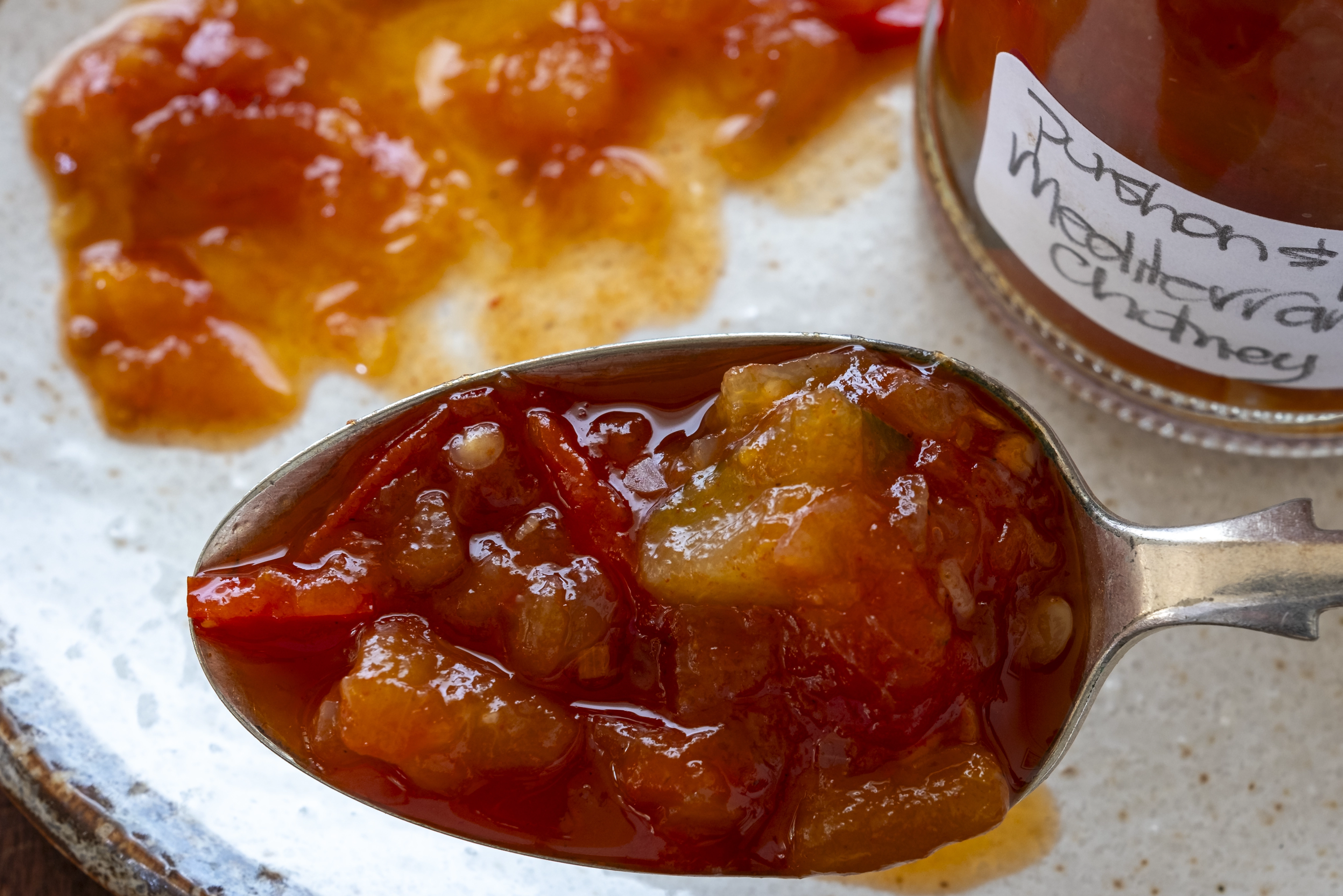
The Making of Chutney
- Reasons
- Technique
With some practice and a spirit of adventure, the technique of chutney and relish making is easily mastered. One of the simplest preservation techniques it’s straightforward and won’t let you down. There’s no tricky stuff, like juggling the pectin, sugar, and acid ratios in jam making to get it to set. Or s-l-o-w-l-y cooking a curd over boiling water to prevent the eggs from overcooking. Or stirring a pot of boiling fruit paste while it spits like a volcanic eruption for what always seems like an eternity. Just chop the fruit or veg, add it to the pot with sugar, vinegar and spices and simmer until thick and glistening. With a few good-to-know tips before you start, your pantry will soon be filled with a kaleidoscope of preserves just waiting to be presented on the table or as a special heart-felt gift.
The term chutney and relish are often used interchangeably and while it’s handy to know the difference, (refer to my article What’s in a Name?: Chutney and Relish) the equipment, basic ingredients and techniques used are the same. For the sake of simplicity, I’ll refer only to chutney throughout this post, however relish is implied.
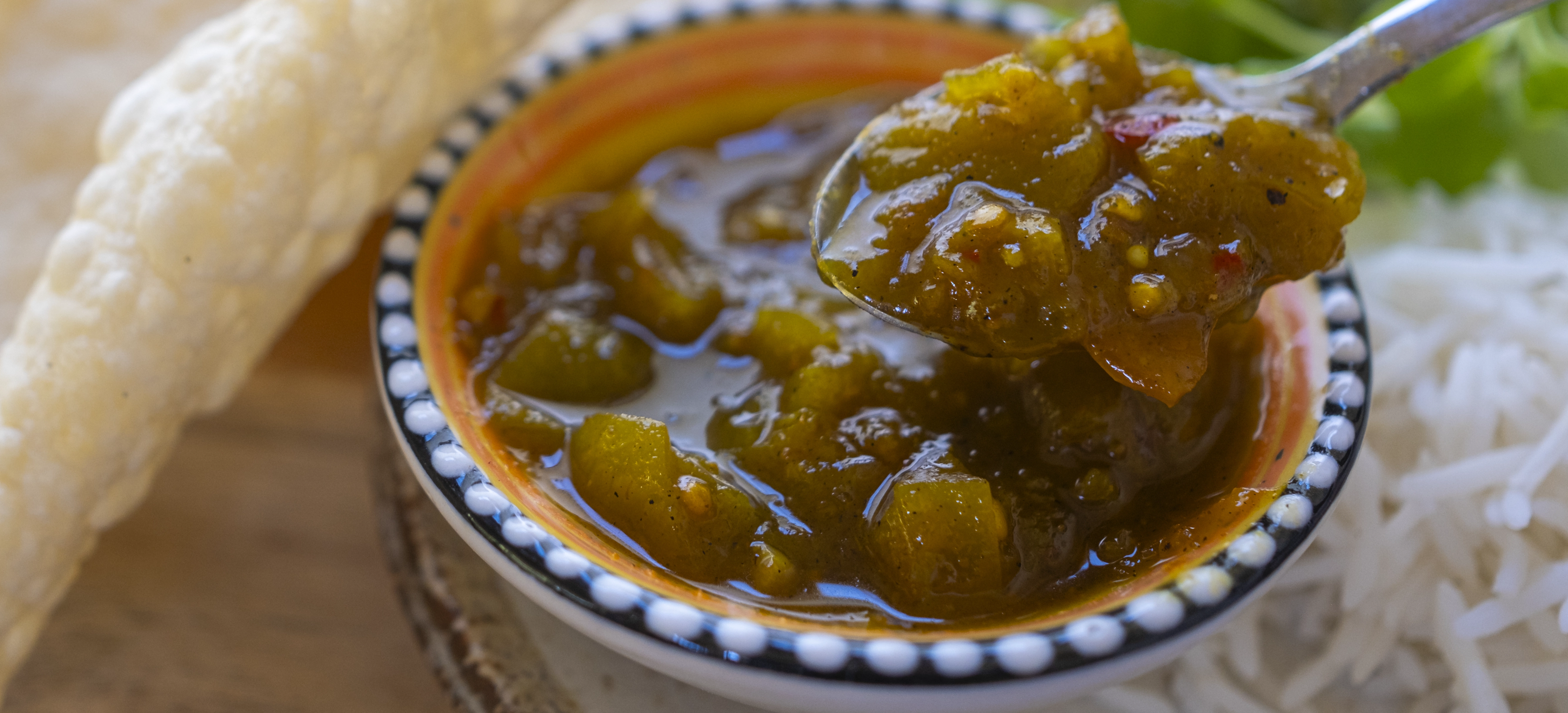 KEY INGREDIENTS
KEY INGREDIENTSVinegar, sugar, spices, salt - simple. The magic of the flavour, colour and style, however, is created by the type and proportions used.
Vinegar
Vinegar prevents the growth of bacteria and mould and must be at least 5% acetic acid. The acetic acid percentage varies across vinegar styles and a lower quantity will compromise the safety of your preserves. Most homemade vinegars don’t achieve this level.
Synthetically produced or biologically made from almost any fermentable carbohydrate source, the type used influences colour, taste and preserving qualities.
The most popular types used are;
- White distilled. Synthetically manufactured and it’s cheap. Its harsh industrial flavour has no place when producing quality preserves.
- Malt. Made from fermented barley, it has the darkest colour and strongest flavour. Some brands include additional caramel colour.
- Apple cider. Made from fermented apple cider, it has a light to medium amber colour.
- Wine Vinegar. Made from either red or white fermented grapes. It has a more delicate flavour than apple cider vinegar.
- Sherry Vinegar. Made exclusively from sherry wines using the solera system. It has a rich, complex flavour and is more expensive.
- Balsamic Vinegar. Traditionally made from fermented concentrated grape juice. Aged in barrels, it has a distinctive rich colour and taste, and is more expensive than wine and apple cider vinegar. Synthetic and lower grade versions are now available so make sure it contains at least 5% acetic acid.
- Sherry and balsamic vinegar are often combined with white, red or apple cider vinegar to add a more complex distinctive flavour or as the only type of vinegar in small batch artisanal products.
Any recipes using vinegar with less than 5% acetic acid, do not store well and must be eaten quickly.
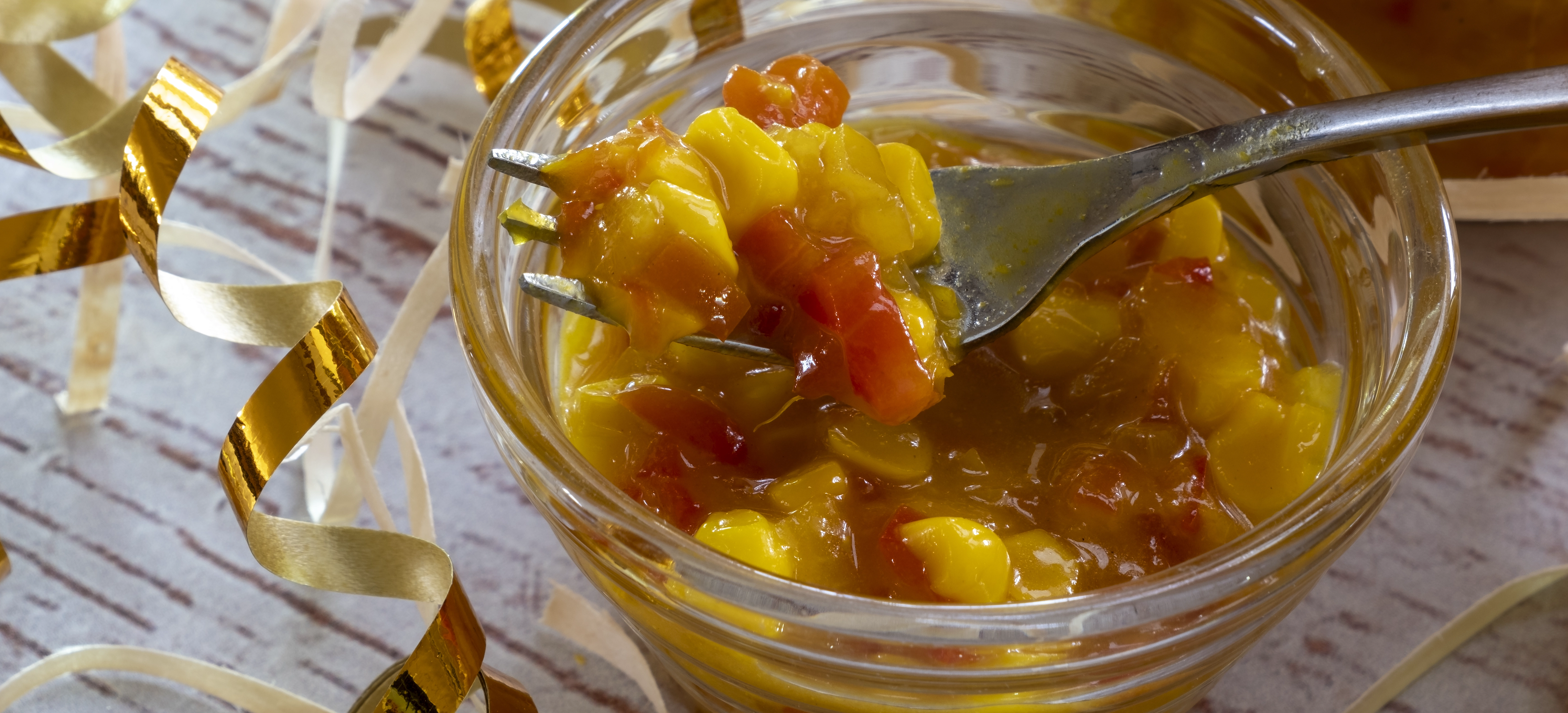 Corn Relish
Corn Relish
Sugar
Different sugars have different qualities which also affect the flavour, colour, and texture. There’s over sixty different types, however most are not suitable for preserving.
The main types used are;
- White or table sugar. Made from sugar cane or sugar beet. During the refining process moisture, minerals and compounds that give sugar its colour and flavour are removed.
- Raw Sugar. Light brown colour and slightly granulated it’s formed when the final refining process is bypassed.
- Light brown and dark brown sugar. White sugar with varying amounts of molasses added. The greater the molasses content, the darker and moister the sugar.
- Demerara. Made from dehydrating cane juice and undergoes minimal processing which leaves some naturally occurring molasses. It has a course structure, a light brown colour and a mellow caramel flavour. It’s named after the old sugarcane region of Demerara, now known as Guyana in South America.
- Muscovado Sugar. Made from evaporated sugar cane juice that’s not refined. Its natural process is free from harmful chemicals often used to make other types of sugar. Available in light and dark variation. The dark brown produces a stronger butterscotch flavour.
Which vinegar and sugar should I use?
You can either use the nominated vinegar and sugar in your chosen recipe or if you make any substitutions or are creating your own remember light coloured vinegars and sugars do not mask fruit colour and flavour and produce a light-coloured vibrant chutney. The darker the vinegar and sugar, the darker the chutney with a more intense underlying caramel – molasses flavour.
Spices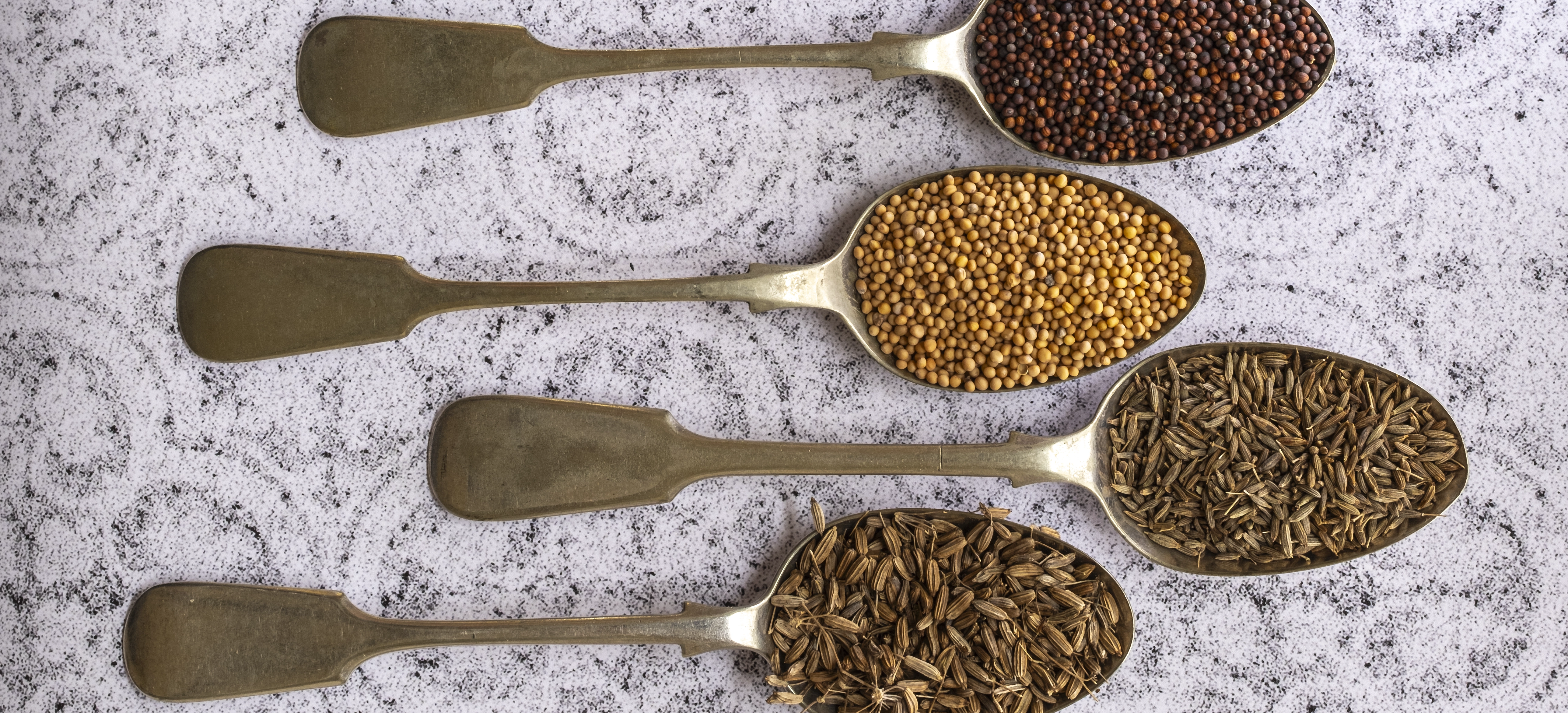
Spices provide the key flavour component and limitless variations; hot, mild, fragrant, traditional, exotic and the quirky. One of the benefits of home preserving is you can adjust the amount of heat and spice to suit your taste. You can also have fun creating your own combinations based on different flavour profiles from around the world.
- The most popular spices are cinnamon (quills and ground), ginger (root and ground), allspice berries, black and white peppercorns (whole and ground), mustard seeds (brown/yellow and black), celery seeds, nutmeg, chillies, cayenne pepper, mace, cloves, paprika and cardamom (seed and ground).
- Ginger, cayenne and chilli provide hot flavours, cloves, cinnamon, nutmeg, and mace add spiciness, turmeric adds colour and vibrancy, cardamom is aromatic and curry powder and chillies give extra heat.
- Where possible use freshly ground, crushed or toasted spices as they release their unique flavour and aroma.
- Make sure ground spices are stored in airtight containers in a cool low light location to retain their flavour vibrancy. Only purchase in small quantities, particularly those not in general use.
- Don’t overuse as they can overpower the fruit/ vegetable chutney base. Chutney takes time to mature, and its flavour is difficult to judge by smell and taste while hot.
Blending your own spice mixtures is fun. You can create different styles that will be adored by family and friends.
Have fun with the spices and create your own culinary signature
GUIDELINES FOR SUCCESSFUL CHUTNEY MAKING
Fruit and Vegetable Preparation
- Wash and dry all fruit/veg to remove dirt or unwanted residues and garden debris.
- Only use good quality fruit. Bruised and imperfect fruit/ veg can be used, however, all bruised or damaged areas must be cut away. Never use over-ripe, mouldy, or rotten ingredients as this will result in a poor-quality chutney.
- Chop fruit/veg into similar-sized pieces so they cook evenly. A fine dice will take less time to cook and produces a smoother consistency while larger diced pieces take longer to cook and produces a more chunky style.
Cooking
- Don’t cover the pan while cooking, unless specifically stated in the recipe. Allow the liquid to evaporate so the chutney can thicken.
- L-o-n-g s-l-o-w simmering is essential. It can take up to 2 hours, depending upon the type, size of chopped ingredients and quantity of fruit/veg, to break down their fibrous content.
- Stir frequently, particularly towards the end of cooking, to prevent it from sticking to the bottom of the preserving pot. Preserves thicken slightly as they cool.
- For fruit/ veg with skins which toughen with cooking ( gooseberries, plums, oranges), place the fruit/veg with half the vinegar and spices in the preserving pan. Simmer gently until the fruit and skin have softened then add the sugar and remaining vinegar and simmer to a chutney consistency. If it evaporates too quickly, before the addition of sugar, add some water and continue to simmer covered until skin has softened. Then proceed to the next step.
- An undercooked chutney will be watery, lack flavour and separate as it sits on a plate. To test it has the right consistency, spoon a little of the mixture on to a plate. The chutney should hold its shape.
"It is impossible to have a failure with chutney: there's nothing to set and no ingredient is barred" Robert Morley
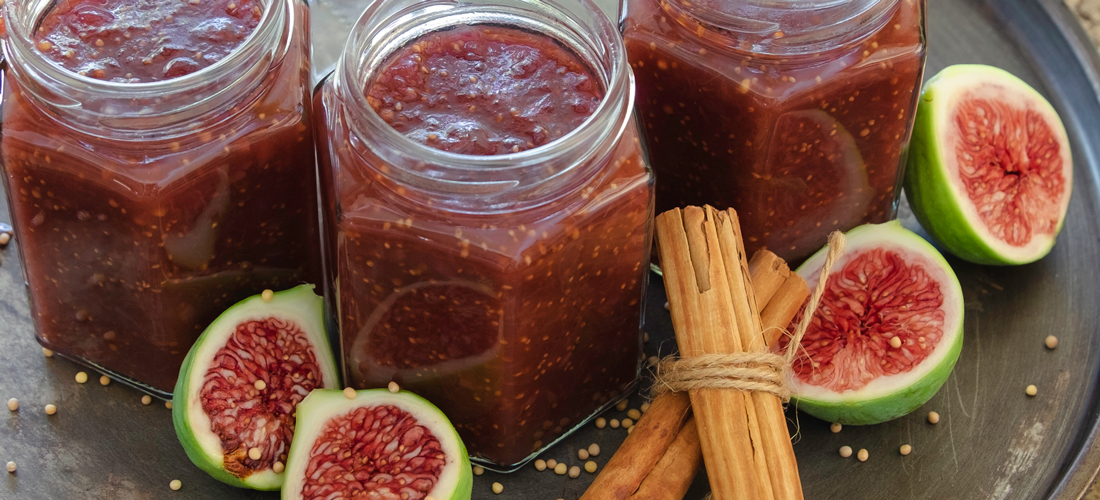 Fig Chutney
Fig Chutney
Bottling and Storage
- Always sterilise jars and lids. Have them hot, dry, and ready for the bottling stage.
- Use a wide neck kitchen funnel to ladle or spoon the hot chutney into the jars, leaving a 1.5cm head space.
- If the chutney has large pieces of fruit/veg, pack the mixture down in the jar to remove any air gaps.
- Seal immediately after bottling. The HHH method of HOT dry jars, HOT dry lids and HOT chutney creates a vacuum seal as the chutney cools. The “popping” sound, often heard in the kitchen, signals a successfully vacuum sealed jar.
- Only use lids with a protective coating to prevent the vinegar’s corrosive action. It prevents rust, moisture and other contaminants entry and spoiling your chutney.
- Identify your chutney and it’s ready-to-eat and use-by date with labels. Wash and dry jars thoroughly prior to labelling.
- Store chutney in an airy, cool dark dry place. Warmth can cause preserves to ferment, and bright sunlight can affect the colour.
- Mature for 2 months to allow the flavours to marry and the vinegar to soften.
- Correctly stored chutney will last up to 2 years unopened in the pantry. Once opened, store in the fridge.
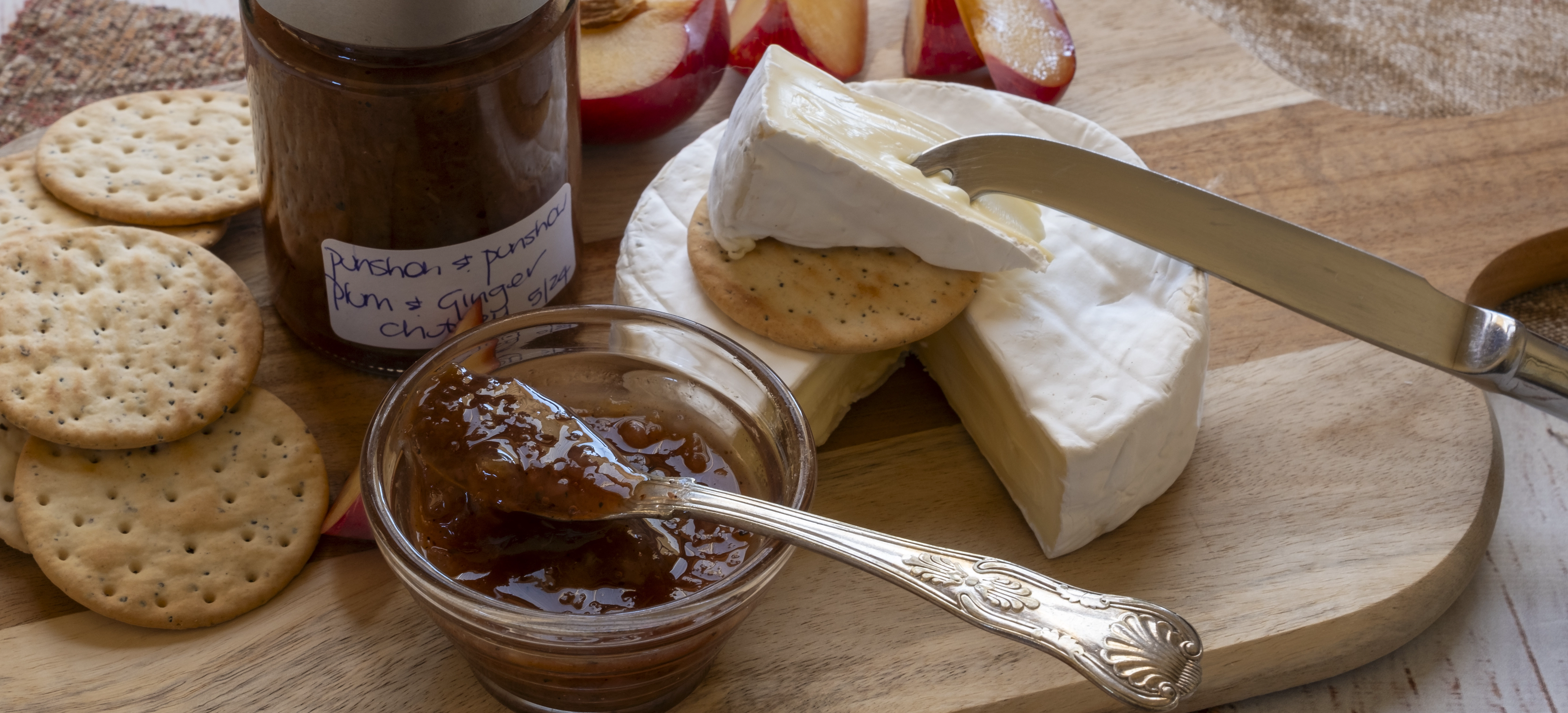 Plum & Ginger Chutney
Plum & Ginger Chutney
TROUBLE SHOOTING
- Colourless, watery chutney with liquid collected at the top of the jar. Chutney not cooked long enough for sufficient liquid to evaporate. Rectify with further cooking. Return to the pan, bring to the boil, then simmer to a jammified consistency.
- Dry chutney, a dark top layer on chutney or chutney shrinking away from the side of the jar. Airtight seal not achieved or during storage kept in a warm location. Discard the chutney as there is no guarantee harmful microorganisms have not developed.
- Fermented or mouldy chutney. Jar was not cleaned/sterilised properly, insufficient vinegar used, and/ or vinegar acetic acid content was less than 5%, or seal was not airtight. No remedy do not eat. Discard.
- A burnt flavour. Insufficient stirring, particularly near the end. Some has stuck to the bottom of the pan – often referred to as “caught” causing it to burn. There is no remedy. Discard.
- A metallic flavour. The preserve cooked in a brass or copper pan which reacted with the vinegar and imparted the metallic flavour. This is a very unpleasant taste. Discard
" Chutney is marvelous. I'm mad about it. To me, its so imperial".
Diana Vreeland (1903-1989)
- A little extra care will make all the difference to your final product. Invest in a kitchen journal and make notes on your experiments, substitutions and adjustments so you can replicate or adjust your next batch. Have fun experimenting with the wide variety of fruit and vegetables to create traditional or new world chutneys that will transform your next meal into a feast.

